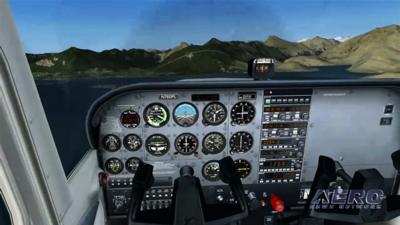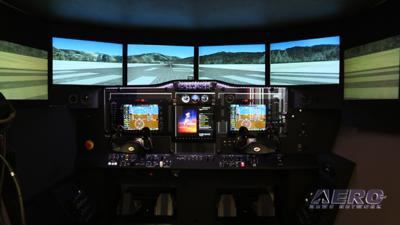Issues Direct Final Rule Anticipating No Adverse Comments
The FAA has adopted a direct final rule amending the regulations governing the use of flight simulators to increase the use of these devices for instrument training requirements above the levels established in its final rule published in 2009.

In developing this direct final rule, the FAA notes that Aviation Training Device (ATD) development has advanced to an impressive level of capability. Many ATDs can simulate weather conditions with variable winds, variable ceilings and visibility, icing, turbulence, high definition (HD) visuals, hundreds of different equipment failure scenarios, navigation specific to current charts and topography, specific navigation and communication equipment use, variable “aircraft specific” performance, and more.
The visual and motion component of some of these devices permit maneuvers that require outside visual references in an aircraft to be successfully taught in an advanced ATD. Many of these simulation capabilities were not possible in earlier devices that the FAA approved for 10 hours of instrument time.
In the final rule published in the Federal Register, the FAA says it believes that permitting pilots to log increased time in ATDs will encourage pilots to practice maneuvers until they are performed to an acceptable level of proficiency. In an ATD, a pilot can replay the training scenario, identify any improper action, and determine corrective actions without undue hazard or risk to persons or property. In this fashion, a pilot can continue to practice tasks and maneuvers in a safe, effective, and cost efficient means of maintaining proficiency.
Devices that qualify as advanced ATDs will be authorized for up to 20 hours of instrument time. Devices that qualify as basic ATDs will be authorized for a maximum of 10 hours of instrument time. In light of this difference, pilots must—as required by current regulations—include in their logbooks the type and identification of any ATD that is used to accomplish aeronautical experience requirements for a certificate, rating, or recent flight experience.

The FAA is also amending appendix C to part 141 to increase the limit on the amount of training hours that may be accomplished in an ATD in an approved course for an instrument rating. With this direct final rule, an ATD may be used for no more than 40 percent of the total flight training hour requirements for an instrument rating.
The rule is a Direct Final Rule, and the FAA does not expect there will be any comments opposing the action. It becomes effective January 20, 2015, and there is a comment period open now through January 2, 2015. The FAA says that it it does receive any negative comments, or a notification that a comment opposed to the direct final rule is forthcoming, it has the right to rescind the direct final rule and send it through the standard process for comments.
(Images from file)
 ANN's Daily Aero-Linx (05.02.24)
ANN's Daily Aero-Linx (05.02.24) ANN's Daily Aero-Term (05.02.24): Touchdown Zone Lighting
ANN's Daily Aero-Term (05.02.24): Touchdown Zone Lighting Aero-News: Quote of the Day (05.02.24)
Aero-News: Quote of the Day (05.02.24) ANN FAQ: Contributing To Aero-TV
ANN FAQ: Contributing To Aero-TV NTSB Final Report: Cirrus Design Corp SR20
NTSB Final Report: Cirrus Design Corp SR20




